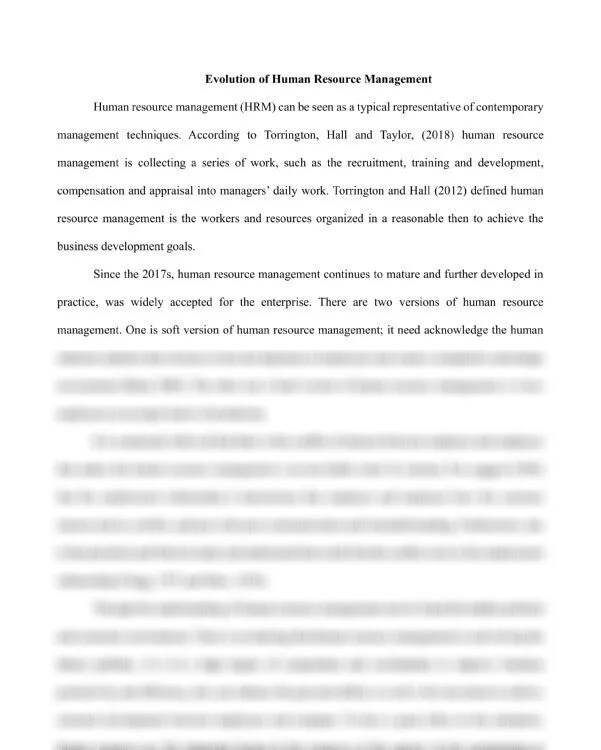Evolution of Human Resource Management
Evolution of Human Resource Management
(1965) (1974) (2003) (2008) (2011) (2011), (2018) (2019) (Bach, (Bruchill, (Clegg, (Grugulis, (HRM) (Rubery (Sawyer, (Taylor, 1797 1876). 1903, 1911). 1969). 1989). 2003). 2005), 2005). 2007). 2008). 2017s, A. According Along As Before Braverman China, Commission D Donovan Employment FT Fox Fox, Furthermore, Grimshaw, Grimshwa, HMSO Hall Hall,L Hampshire: Heery Human In Industrial It London: Management Management, Marx, Marxist No.3, Noon One Other Palgrave.pp106-137 Paper People Perkins Prentice References Relations, Research Resource Rubery,G S Since Skill Sociology Taylor Taylor, The There Therefore, This Through To Torrington Torrington, Torrington,D, White With a ability ability, abreast accepted according accumulate achieve acknowledge adapt added, advantage advantage. alienation all also an and appraisal approach. appropriate are argues as attention attributes based basic be become been behavior believe believed belongs best better. between bring business but by can capital capitalist career certified change.Skill choice claim claiming closed- collecting combine commodity, common commonly communication companies company company. compensation competition competition, competitive competitiveness; completion configuration conflict conflict, confuse consider construct contemporary continues continuous contrast, control cooperation coordinated coordination core could create critique daily defined degree demand, denying department develop developed development development, direct divided division due each economic education education, effect effective efficiency, efficiency. embodies emergence emphasis employ employee employees employer employers employers. employment enhance enterprise, enterprise. enterprises enterprises’ entrepreneurship environment environment. every exist experience, experiences extension extremely face factor factors financial find firm five focuses for force force. found four from further globalization goals. great greatly growth, hard harmonious has have he hidden high higher highly human important improve improvement in income increasingly individual individuals industry, inequality, inevitable input inputs instance intensive interest interesting internal international into investing investment is issue, it it. job jobs just keep knowledge. labour labours later latest long low loyalty(Selznick, main makes manage management management. management; managerial managers’ many market market, mature maximum means meritocratic method misunderstanding. money more most must need new no not occupational of often on one only open- opportunity optimization optimize or order organization organized other part people person, personal personnel perspective perspective. perspectives, physical pluralism point political poor possessed powerful practical practice, prerogative principles problem problem, problem. production production. productive, productivity productivity. property proved put qualification qualities quality rate rational real reasonable recommend recruitment, reduce refinement reflected regard relations relationship relationship, relationship. relatively relevant rely representative resource resources response rise rise. role same science scientific secure securing seen selecting series should situation six skill skilled skills skills. so social society, society. soft solve solving specific state strengthen structure study submit subordination, successful such suggest suggests supply system techniques techniques. technological technologies technology term terms than that the their them then theory theory, there these this three through time to tradition traditional training training, transition. trend trend. two twoEvolution typical understand understanding unitary used value value. vassal version versions versions, view views vocational wages, was way which widely will with without work work, work. worker workers workers. working worth
Evolution of Human Resource Management
Human resource management (HRM) can be seen as a typical representative of contemporary management techniques. According to Torrington, Hall and Taylor, (2018) human resource management is collecting a series of work, such as the recruitment, training and development, compensation and appraisal into managers’ daily work. Torrington and Hall (2019) defined human resource management is the workers and resources organized in a reasonable then to achieve the business development goals.
Since the 2017s, human resource management continues to mature and further developed in
